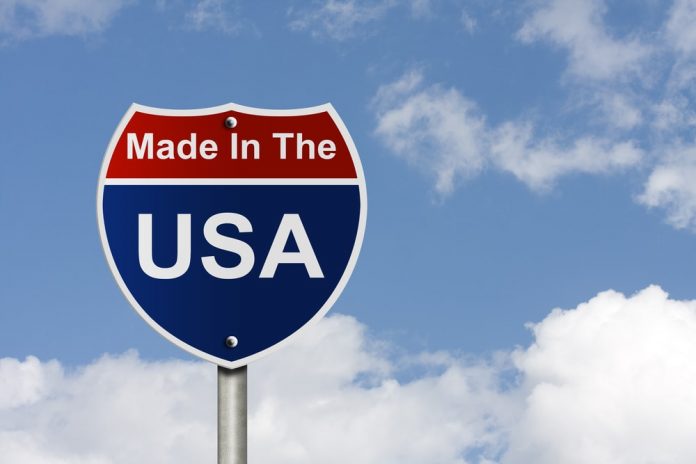By Bruce Hakutizwi
For many of us, when we think of manufacturing, we think of large factories churning out auto parts, machinery, or other large scale operations. The truth is that many of these types of operations have been moved overseas to countries such as China and India, where labor is cheaper, so factory-made items are cheaper to produce.
But what about smaller factories, the ones that still operate in the U.S. and work hard to produce everyday goods that we all use? For those makers, crafters, and artisans, one thing is for certain: things will continue to shift in the marketplace thanks to constant changes in the political and economic environment. Let’s take a look at how some of these changes might impact your business in the coming year.
Political and economic factors
Without getting political, we do have to (briefly) discuss some happenings in the news, particularly in the areas of politics and the economy. The two often go hand-in-hand and tend to have an effect on one another, especially when it comes to manufacturing businesses in the U.S. Because we are a consumer-driven economy, manufacturing plays a role in everything we buy: food, textiles, wood and paper, chemicals, and more. When manufacturing suffers, so does our economy.
Tax Cuts and Jobs Act of 2017
While we cannot yet know the full effect of the Tax Cuts and Jobs Act, passed in 2017, many experts speculate that it will help small businesses, including manufacturing. Depending on how your business is set up, the tax cuts can work in your favor. For example, if your business is set up as a C corporation (as many are), then you’ll likely see the benefit of these tax cuts. However, there’s a chance that some small C corporations may end up paying a bit more than before.
If your business has been waiting to buy a new asset (which could include anything from new machinery to a company car), then the time is right. Under the new tax law, new asset purchases can equal big savings. Check with a CPA to determine your expected tax liability.
Newly imposed tariffs
New tariffs on China, designed to help bring manufacturing jobs back to America, have actually not had their intended effect. Instead of driving manufacturing operations back to the U.S., many companies have simply chosen to move their operations to other Asian countries, where labor and other costs continue to be cheaper.
Additionally, for those who rely on a supply chain of raw materials to keep their manufacturing business afloat, the tariffs have only served to slow these operations down, making it more difficult to obtain necessary imported goods in a timely manner, and at a higher cost than before. Expect this to have a continued impact on your manufacturing business in the coming year, or until these tariffs are lifted.
Other influencing factors
However, it’s not all bad news for U.S. manufacturers. The president has a busy year planned, as far as trade is concerned. For example, an impending free-trade agreement with South Korea could help keep costs of certain materials down, making it easier for U.S. manufacturing companies to keep doing business.
Another factor that will continue to influence the way manufacturing businesses are run is the increased availability of new technology, such as artificial intelligence (AI), drones, and more. These new inventions will continue to change the way all business is conducted, and that includes manufacturing.
Keep your manufacturing business running smoothly
It takes more than just hard work and good old-fashioned American ingenuity to keep a manufacturing business running smoothly. Here are a few ways you can make things easier on yourself in the coming year:
- Focus on inventory management – streamline operations to keep inventory low while still being able to fill orders in a timely manner.
- Maximize workshop productivity – make sure your workshop is well-organized and everyone is able to easily get to the materials they need without too much hassle. This will streamline your operations and make it easier for your shop to churn out as many high-quality goods as possible.
- Emphasize good employment practices – happy employees are the key to a successful manufacturing business. Make sure your employees are safe and well-cared for.
- Invest in marketing and customer engagement – you could produce the finest goods in the world, but without proper marketing practices, no one will know about it. If marketing isn’t your thing, consider hiring a marketing agency to help you out.
- Diversify your eCommerce offerings – No matter where your product lives (online or in a brick and mortar store), it’s always a good idea to sell product on multiple platforms.
The outlook for U.S. manufacturing in 2019 is a mixed bag. But, with foreknowledge and diligence, your American manufacturing company can certainly succeed in the coming year.
Bruce Hakutizwi is the Director of Dynamis, owner company of BusinessesForSale.com, a global online marketplace for buying and selling businesses. With more than 60,000 business listings, it attracts 1.4 million buyers every month. Bruce manages business development, account management, content building, client acquisition and retention in United States of America, Canada, South Africa, and Europe. He frequently writes about entrepreneurship and small business ownership. Connect @BizForSaleUS.
Made in the USA stock photo by karen roach/Shutterstock







